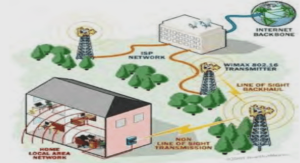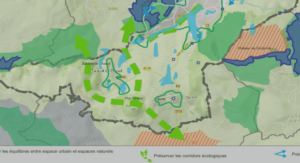What is the point gardening when the house is burning?
1,600 gardens and farms have been reported in 2018 in Detroit. More than 24,000 individuals and families feed themselves at least occasionally with fruits and vegetables grown in the city (KGD; 2018). Beyond splashy headlines and well intentioned movies, urban farms and gardens have blossomed in neighbourhoods hardly hit by deindustrialization and depopulation: the city population has fallen from roughly 1.8 million inhabitants in 1950 to 677,000 in 2015. In 2012, 36% of the residents lived below the poverty line of $11,770/ year. As one of my interviewees told me once, “If you want to grow vegetables for your own, it’s an activity, there’s nothing wrong with that. But in a city like Detroit with 40 square miles with surplus land without a purpose [103,6 km², 28% of the city], without a budget, the answer isn’t ‘Hey, we should all garden’” (Mike; 22nd of January).
But some residents do. Moreover, they grow, process, distribute, sell their fruits and vegetables in restaurants, in farmers’ markets, Community Supported Agriculture networks [AMAPs], organize themselves in cooperatives, engage in food justice movements, claims their right before City Council. What are these people trying to do, seriously? Let’s take these people seriously. The following document is the result of a ten-months inquiry and a three-months qualitative fieldwork in the City of Detroit, Michigan, between January and April 2019. This research aims at understanding how urban farmers financially and politically sustain themselves in 2019 Detroit.
By ‘sustaining themselves’, we mean the farmers’ capacity to provide themselves with resources vital for their economic activity (land, labour, tools, greenhouses, seeds) as well as their capacity to organize themselves collectively for advocating before city government, convincing new customers, creating alternative models of production. Remains the urban farming oxymoron (Smit et al.; 2001). Because urban farming covers a wide range of practices, we will limit ourselves to a descriptive approach for now: what is urban farming if not ‘the production of food and non-food plant and tree crops, and animal husbandry, both within and fringing urban area’ (OECD; 1998)? Although the terms of ‘farming’ and ‘agriculture’ have been discussed in international economics of food (Bernstein; 2010), they will cover the same reality here: they refer to the stages of growing, processing, distributing and selling food and non-food plants and crops in farms or gardens within city limits.
In order to get a sense of farmers’ political economics, we investigated patterns of grant financing in Detroit between 2010 and 2015. Then, we combined these first insights with a qualitative inquiry (26 in-depth interviews, multi-site ethnographies) realized during the fieldwork in the city.
Urban agriculture and Detroit: a literature review and our conceptual positioning
The publication of the UNDP Food, Jobs and Sustainable Cities in 1996 and 2001 (Smit et al; 2001) is often presented as the seminal breakthrough of urban agriculture into the public and scientific debate (Lesher Jr; 2006; Brinkley; 2013). In this report, four themes have been introduced has a way to gather disparate publications related to urban agriculture. These themes are still nowadays structuring the research agenda in four directions: “1/ The global significanceof urban agriculture, 2/ What is urban agriculture, 3/ Benefits, problems and constraints, 4/ The future of urban agriculture” (Smit et al; 2001). By far, the third theme is the most documented issue in the urban farming literature for the last twenty years. The benefits, problems and constraints of urban farms are indeed related to their capacity to interact with their environment and, at the end of the day, to assess their relevance for the society in general.
The city of Detroit on the other hand, has been often chosen as a case study for evidencebased inquiries related to urban farming. The breadth of the urban decline, the level of vacancy rates, the poor land management and the implementation of so-called ‘rightsizing policies’ (Anderson; 2011) have been the breeding ground for the emergence of food justice movements in the city. Since the city’s bankruptcy in 2013 and the retrenchment of many public services, the role played by the private sector in providing those and in defining the public interest is from now on crucial. As of now, some food justice movement themes, urban farming alike, entered the city institutions (Detroit Food Policy Council).
This master thesis aims at taking an opposite stance to urban farming-related literature: rather than questioning how urban farming is beneficial to Detroit’s social environment, we would like to unveil how this environment actually protect, sustain or threaten urban farming. Such proposition comes from the observation that the development of urban farms and community gardens in Detroit has reached outstanding proportions. Urban farmers and gardeners are now constitutive of Detroit’s social landscape, they created relays in institutions and are sometimes organised collectively. Saying that is not affirming that urban farmers and gardeners constitute a homogeneous group: on the contrary, farmers started their activities for many different reasons and for very different goals, sometimes generating conflicts as we will see later on.
The following review is organized as follow: we will first introduce the assessments of urban agriculture intakes for communities, both as benefits and as perverse effects (1). Secondly, we will contextualize these studies in the specific case of Detroit’s history of structural racism and urban crisis to understand why urban farming has become so important there (2). Finally, we will present our conceptual positioning and the development we propose in this master thesis (3).
What can urban farming offer to communities?
Before presenting the benefits and perverse effects of urban farming, it is worth noticing that these terms look morally burdened on the first sight. Indeed, the urban agriculture scholar field is closely linked to studies of food systems and their critiques. “Because much of UA [Urban Agriculture] literature is advocacy-driven” (Brinkley; 2013), benefits of urban farms are often presented as arguments in wider prescriptive statements about food system transition toward more local, autonomous, inclusive models of food production. This review will not discuss in depth the relevance of these wider statements on food-systems because they would move far beyond the question of urban farming in Detroit. However, they can help us to understand better how these categories of ‘benefits’ and ‘perverse effects’ in food systems have been interpreted in the literature (a). Secondly, we will present to what extent urban farming has procured benefits to the communities but also has generated many critiques (b).
On the categories of ‘benefits’ and ‘perverse effects’ of food systems on food security
In the 1990’s an extensive literature has shown how the international food production system generated economic and hunger crises between world regions (Friedmann and McMichael; 1989, Friedmann; 1995; Bernstein; 2010, Sommerville et al; 2014). These authors defined ‘food regimes’ as “rule-governed structures of production and consumption of food on a world scale’ (Friedmann; 1995) and the related dependence of former colonies to capitalist economies in food markets. On the other hand, critiques of conventional food systems in developed countries participated to the development of the food justice literature focusing on inequalities of race and gender within food systems (Campbell; 1996, Gottlieb and Fisher; 1996, also see Glennie and Alkon; 2018 for a recent review). In both of these literature streams, focus was made on the systemic inequalities induced by industrial organisation of food production such as neo-colonial dependences, racial and gender exclusion to food access.
On the other hand, systemic approach of food production can be traced from Hedden’s How Great Cities Are Fed (1929) seminal book. Since food security concerns and their links to sustainable development goals were pointed out in the Brundtland report (WCED; 1987), scientists and planners put forward the importance of looking at the spatial organisation in conventional agriculture production. For instance, analyses of Hedden’s regional ‘food-sheds’, rehabilitated by Getz (1991), defined the organisation of conventional food production according to its extension thorough spaces. In this literature, focus was made on the system’s efficacy to allocate resources and technical solutions to improve it. These two streams of literature share two important features. First, they define a food system as a chain of events (production, processing, distribution, consumption), offering interesting case studies for theories of global value chain (Dolan and Humphrey; 2004, Humphrey and Schmitz; 2000, Gereffi et al.; 2005). Secondly, they identify food security as the principal (un)observed and desired outcome of these systems. Food security can be defined as “when all people, at all times, have physical and economic access to sufficient, safe and nutritious food to meet their dietary needs and food preferences for an active and healthy life” (WFS; 1996) .
The benefits and critiques of urban agriculture to its environment
Traditional urban agriculture literature has deep roots in the study of solutions to food insecurity in the developing world (Brinkley; 2013). Many researchers have demonstrated how urban agriculture can be used as a developmental tool in these countries from the field of geography, architecture or agronomy (Freeman; 1991, Egziabeher et al.; 1994, Atkinson; 1995, Binns and Lynch; 1998, Maxwell; 2003). Others also have developed this application in Northern countries in times of crisis, from generating property value to promoting civic engagement (Viljoen et al.;2005) but generally concluded that urban agriculture has a limited ability to supply food in these contexts (Theibert; 2012). Brinkley concludes that in Northern countries, “UA is relegated to social planning due to its numerous benefits in community development and neighbourhood improvement” (Brinkley; 2013).
However, new conceptions of food systems as social-ecological brought a new dimension to the study of urban farming. The growing literature on food justice has incorporated knowledge provided by critical studies of food systems and “seeks to understand how inequalities of race, class and gender are reproduced and contested within food systems” (Glennie and Alkon; 2018). In the United States, this field of studies is organised around several axes which are social movement activism (Gottlieb; 2009, Crosley; 2014), the development of alternative food practices (Goodman et al; 2002, Kremen et al.; 2012, , Galt et al.; 2014) and inequalities in conventional and alternative food systems (Harrison; 2008, Lawrence et al.; 2013). Within this literature, the development of alternative food practices has primarily focused on empirical studies of urban farming. Indeed, urban farming has been generally considered as a case of alternative food system implementation. Researchers assess potential benefits of urban farming for communities and meeting local food needs (Vitiello 2008, White; 2011) But also criticized how urban farming practices reproduce race, class and gender inequalities (Guthman; 2008, McClintock 2013, Cohen and Reynolds; 2014).
General introduction |



